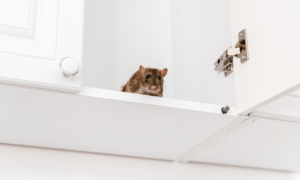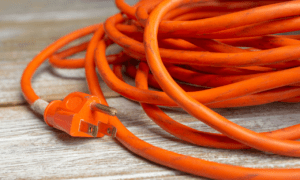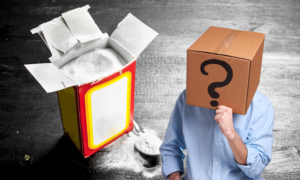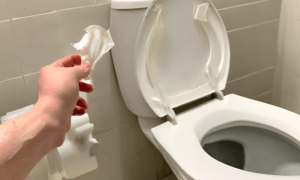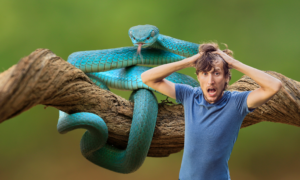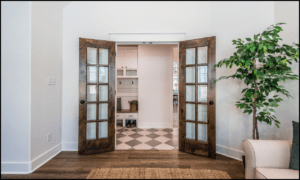Introduction
The Enchanting Appeal of Lava Lamps
Lava lamps have been captivating enthusiasts with their mesmerizing, colorful blobs of liquid since the 1960s. These iconic lamps have a unique ability to set a mood and create a captivating ambiance. However, while they are admired for their aesthetics, questions often arise about their safety, particularly concerning fire hazards.
Addressing Fire Safety Concerns
In this comprehensive guide, we will delve into the world of lava lamps and examine the critical question: Are they a potential fire hazard? We will explore the science behind lava lamps, the materials used, safety features, and real-life incidents to provide you with a clear understanding of the safety aspects associated with these beloved decor pieces.

Chapter 1: Understanding Lava Lamps
How Lava Lamps Work
To evaluate the fire safety of lava lamps, it’s essential to understand their inner workings. Lava lamps consist of a glass vessel filled with a special liquid and wax that moves in response to heat. As the lamp warms up, the wax rises and falls, creating mesmerizing patterns. This process involves heating and cooling cycles that raise questions about fire risk.
The Science Behind the Mesmerizing Display
The captivating display of a lava lamp is a result of carefully calibrated science. We’ll explore the principles of heat convection, density, and buoyancy that give rise to the fluid dynamics within the lamp. Understanding these principles is the first step in assessing the potential fire hazards associated with lava lamps.
Heat Convection: Lava lamps rely on heat convection, a process where hotter material rises and cooler material sinks. At the base of the lamp, a bulb or heating element generates heat, warming the surrounding liquid and wax. As the wax absorbs this heat, it becomes less dense, causing it to rise towards the top of the lamp. As it reaches cooler regions, the wax cools down and becomes denser, causing it to sink back down. This continuous cycle creates the mesmerizing lava lamp effect.
Density Dynamics: The interaction between the wax and the liquid inside the lamp is a critical factor in creating the visually appealing movements. The wax is carefully formulated to be slightly denser than the liquid when it’s cold. However, as it heats up, its density decreases, making it lighter than the surrounding liquid. This density difference is what causes the wax to rise in globules.
Buoyancy in Action: Wax’s buoyancy—the upward force a fluid applies to an object submerged in it—plays a big part in how it behaves. When the wax rises due to its decreased density, it experiences an upward buoyant force. Conversely, as it cools and becomes denser, it feels a downward gravitational force, causing it to descend. The interplay between buoyancy and gravity results in the characteristic flow and movement of the wax within the lamp.
Now that we’ve established the scientific principles behind the mesmerizing display of lava lamps, let’s delve deeper into the potential fire hazards associated with these iconic decor items. Understanding the science behind lava lamps will provide valuable insights into their safety, allowing us to enjoy their hypnotic beauty with peace of mind. In the following chapters, we’ll explore various aspects of lava lamp safety, from the materials used to common maintenance practices, ensuring that you can enjoy the magic of lava lamps without worry.

The Composition of Lava Lamps
Components and Materials Used
Lava lamps are iconic pieces of decor that have fascinated people for decades. Their mesmerizing, lava-like motion is not only soothing but also aesthetically pleasing. However, the enchanting display within these lamps is the result of a delicate balance of materials and components. In this chapter, we will delve into the composition of lava lamps and explore the materials used to create these captivating devices.
Glass Vessel: The Enigmatic Enclosure
The outer shell of a lava lamp, the glass vessel, is not just a decorative element but a crucial component of the lamp’s functionality. It is typically made of high-quality borosilicate glass, known for its heat resistance and durability. This type of glass is chosen because it can withstand the elevated temperatures inside the lamp without cracking or shattering.
The vessel’s shape and size play a pivotal role in determining the flow and movement of the wax and liquid within. Its transparency allows for the mesmerizing display of the wax’s ascent and descent, making it an integral part of the lava lamp’s visual appeal.
The Liquid: The Medium of Transformation
The liquid in a lava lamp, often a proprietary blend, is a specially formulated solution designed to facilitate the wax’s unique motion. This liquid is typically clear or translucent and serves several purposes. For starters, it functions as a heat transfer medium, evenly distributing the heat generated by the lamp’s light source, which is critical for the movement of the wax. Secondly, it must have a density that allows the wax to rise and fall gracefully, creating the captivating lava lamp effect.
The exact composition of this liquid is often a closely guarded secret by manufacturers. It typically includes a mixture of water and other chemicals, which may include surfactants and stabilizers to control the wax’s movement.
The Wax: The Dancing Substance
Arguably the most captivating aspect of the lava lamp is the wax. The wax, often composed of paraffin or a similar substance, is chosen for its ability to change density with temperature. As the lamp heats up, the wax melts and becomes less dense than the surrounding liquid. This causes it to rise in globular shapes, creating the iconic lava lamp blobs. As it cools, the wax becomes denser and descends back down, repeating the mesmerizing cycle.
Evaluating Fire Risks in the Components
Lava lamps, while enchanting, are not immune to potential fire hazards. It’s essential to consider the safety aspects associated with the various components within these lamps.
- Heat-Generating Light Source: One of the primary components that can pose a fire risk is the light source, typically a halogen bulb. These bulbs generate significant heat during operation. However, manufacturers take precautions to ensure that the bulb’s heat is managed safely. They carefully design the lamp’s base and use insulating materials to minimize the risk of the bulb coming into direct contact with other components or flammable materials.
- Overheating Concerns: Lava lamps are designed to operate within specific temperature ranges to ensure the wax’s proper flow. If the lamp overheats, it can lead to excessive expansion of the wax, potentially causing leaks or even combustion. Manufacturers incorporate thermostats and thermal protection mechanisms to prevent overheating, shutting down the lamp if it reaches unsafe temperatures.
- Quality Control Measures: Reputable manufacturers subject their lava lamps to rigorous quality control testing, ensuring that all components meet safety standards. This includes evaluating the glass vessel’s integrity, the liquid’s composition, and the wax’s behavior under various conditions.

Are Lava Lamps Safe to Use?
Exploring the Safety Features
Lava lamps have been a popular choice for adding a touch of retro style to homes and workspaces for decades. While they are known for their mesmerizing, colorful blobs floating in liquid wax, many people wonder about their safety. In this chapter, we will delve into the safety features that manufacturers incorporate into lava lamps to ensure they can be enjoyed without posing a risk to users or their surroundings.
Manufacturer Guidelines and Regulations
One of the primary ways lava lamp manufacturers ensure the safety of their products is by providing comprehensive usage guidelines. These guidelines are typically found in the user manual that comes with the lamp or on the manufacturer’s website. It’s essential to read and follow these instructions carefully to maximize safety and longevity.
Here are some common guidelines you’ll find:
- Placement: Manufacturers often recommend placing lava lamps on a level, stable surface away from direct sunlight, drafts, and flammable materials. This is crucial to prevent overheating and accidental spills.
- Operating Duration: Lava lamps are designed for intermittent use. Manufacturers usually recommend operating them for a maximum of 8-10 hours at a time to prevent overheating.
- Cooling Period: After prolonged use, manufacturers suggest allowing the lamp to cool down for a few hours before turning it on again. This helps prevent overheating of the wax and ensures a longer lifespan for the lamp.
- Handling: It’s important to handle your lava lamp with care, especially when moving it. Sudden jolts or drops can cause the liquid to mix with the wax prematurely, affecting its performance.
- Bulb Replacement: Lava lamps require a specific wattage bulb, and it’s vital to replace it with the recommended type to prevent overheating. Manufacturers often provide information on the appropriate bulb to use.
Regulatory Standards
In addition to the manufacturer’s guidelines, lava lamps are subject to various regulatory standards to ensure their safety during production and sale. These standards vary by country and are designed to protect consumers from potential hazards. Some key aspects covered by these standards include:
- Electrical Safety: Lava lamps must meet electrical safety standards to prevent electrical fires or shocks. This includes using well-insulated wiring and components to reduce the risk of electrical accidents.
- Material Safety: To prevent breakage and leakage, the materials used in lava lamps, such as glass and wax, must meet safety standards. Heat-resistant glass is commonly used to reduce the risk of shattering caused by the lamp’s heat.
- Stability and Base Design: The base design of lava lamps should ensure stability to prevent accidental tipping, which could result in hot liquid spilling and causing burns or damage.
- Chemical Safety: The composition of the wax and liquid inside lava lamps should comply with safety regulations to prevent toxic fumes or reactions when heated.
Manufacturers often conduct rigorous testing to ensure their lava lamps meet these safety standards before they are sold to consumers. As a buyer, it’s a good practice to look for certifications or labels indicating compliance with relevant safety regulations when purchasing a lava lamp.

Potential Fire Hazards
Identifying Potential Fire Risks
While lava lamps are designed with safety in mind, there are still potential fire hazards associated with their use. These hazards can include overheating, electrical faults, or accidental damage to the lamp. We’ll delve into these potential risks and how they can be mitigated.
Common Causes of Lava Lamp Incidents
Real-world incidents involving lava lamps can shed light on common causes of accidents. By understanding the circumstances that lead to accidents, users can take proactive measures to prevent them. We’ll share insights from reported incidents and discuss how they relate to fire safety.
Overheating
One of the primary concerns with lava lamps is the potential for overheating. Lava lamps rely on heat to function properly, and if they become too hot, they can pose a fire risk. Several things can lead to overheating, including:
Operating for Prolonged Periods: Leaving your lava lamp on for extended periods, exceeding the manufacturer’s recommendations, can lead to overheating. The lamp’s base, which houses the heating element, can become extremely hot over time.
Mitigation: To prevent overheating, always follow the manufacturer’s guidelines for usage. Most lava lamps are designed for intermittent use and should be turned off after a few hours.
Electrical Faults
Electrical faults can occur in any electronic device, including lava lamps. Short circuits, damaged wiring, or manufacturing defects can lead to electrical malfunctions that increase the risk of fire. These faults can cause sparks or overheating, both of which are hazardous.
Mitigation:To reduce the risk of electrical faults, ensure that you purchase lava lamps from reputable manufacturers. Regularly inspect the lamp’s cord and plug for any signs of wear or damage. If you notice any issues, discontinue use and have the lamp repaired or replaced by a professional.
Accidental Damage
Accidental damage is another common cause of lava lamp incidents. These lamps are made of glass, which can break if dropped or mishandled. When a lava lamp’s glass enclosure shatters, it can expose the hot wax and heating element, potentially leading to a fire.
Mitigation: Handle your lava lamp with care, and place it on a stable, flat surface where it is less likely to be knocked over. Keep it out of the reach of children and pets to prevent accidents. If your lamp sustains damage, refrain from using it until it has been properly inspected and repaired.
4. Positioning and Surroundings
Where you place your lava lamp can also affect its safety. Placing it near flammable materials such as curtains, paper, or furniture that can catch fire easily increases the risk of a fire hazard.
Mitigation: Always position your lava lamp on a heat-resistant surface, away from flammable objects, and follow the manufacturer’s recommendations regarding the lamp’s placement.
In conclusion, while lava lamps are generally safe when used correctly, it’s essential to be aware of the potential fire hazards associated with them. Overheating, electrical faults, accidental damage, and improper positioning can all lead to dangerous situations. By understanding these risks and following safety guidelines, you can enjoy your lava lamp safely and without worry. In the next chapter, we will discuss essential maintenance tips to keep your lava lamp in optimal condition and minimize potential hazards.

Lava Lamp Safety Tips
Practical Steps to Ensure Safe Usage
Lava lamps are not only mesmerizing but can also add a unique ambiance to any space. However, it’s crucial to prioritize safety when using them, as they involve the use of heat and liquids. In this chapter, we will provide you with practical safety tips for lava lamp enthusiasts. These tips include recommendations for placement, maintenance guidelines, and safe operation practices. Following these guidelines is essential for minimizing fire hazards and ensuring a worry-free experience with your lava lamp.
Maintaining a Fire-Safe Environment
Safety concerns associated with lava lamps extend beyond the lamp itself. It’s important to create a fire-safe environment in the area where you place your lava lamp. Here are some key considerations to keep in mind:
- Choose the Right Location: Select a stable and flat surface for your lava lamp. Ensure that it is away from any flammable materials, such as curtains, papers, or fabric. A clear space around the lamp of at least one foot is advisable.
- Keep It Stable: Ensure that your lava lamp is placed on a level and stable surface. This prevents accidental tipping, which could lead to spilled liquid and potential fire hazards.
- Use surge protectors: Connecting your lava lamp and any other nearby electrical devices to surge protectors is a good idea. These devices can help prevent electrical issues and reduce the risk of fire caused by power surges.
- Regularly Inspect the Cord: Examine the power cord of your lava lamp for any signs of wear or damage. If you notice frayed wires or exposed conductors, immediately unplug the lamp and replace the cord. Do not attempt to use a damaged cord, as it can pose a significant fire risk.
- Avoid overheating: never leave your lava lamp on for extended periods, especially unattended. Overheating can cause the liquid to expand excessively, potentially leading to glass breakage or other hazards. Follow the manufacturer’s recommended usage guidelines.
- Keep out of reach of children and pets: Lava lamps are captivating to both kids and pets, but they can be dangerous if tampered with. Make sure your lava lamp is positioned in a spot where it cannot be disturbed by curious hands or paws or knocked over.
- Regular Maintenance: Periodically inspect your lava lamp for any leaks, cracks, or other damage. If you notice any issues, discontinue use and contact the manufacturer for guidance on repair or replacement.
- Unplug When Not in Use: Whenever you’re not actively enjoying the soothing glow of your lava lamp, it’s a good idea to unplug it. This not only conserves energy but also eliminates the risk of electrical malfunctions in your absence.
- Follow Manufacturer Instructions: Always adhere to the manufacturer’s instructions and guidelines provided with your lava lamp. They will often include specific safety recommendations that are crucial for safe operation.
By following these lava lamp safety tips and maintaining a fire-safe environment, you can enjoy the captivating display of colors and shapes without worrying about potential hazards. Remember, safety should always be a top priority when using any electrical or heat-producing device in your home.

Regulatory Standards and Certification
Understanding Safety Standards for Lava Lamps
Regulatory standards are the backbone of product safety, ensuring that consumer items, including lava lamps, are designed and manufactured with the utmost care. In this chapter, we’ll delve into the intricate world of safety standards and requirements that manufacturers must adhere to. By gaining insight into these standards, you’ll be better equipped to make informed decisions when it comes to purchasing and enjoying lava lamps in your home.
The Role of Certification Agencies
One of the cornerstones of product safety is the role of certification agencies. These organizations are responsible for evaluating and certifying the safety of various products, including lava lamps. Their meticulous testing processes and rigorous assessments provide consumers with assurance that the products they are purchasing meet established safety standards.
- Understanding Certification Labels
Certification labels are a crucial aspect of product safety. They serve as a visible indicator that a product has undergone testing and meets specific safety criteria. When it comes to lava lamps, one of the most recognized certification labels is UL (Underwriters Laboratories).
- UL (Underwriters Laboratories) Certification
UL is a globally renowned certification agency that has been around for more than a century. Their mission is to promote safe living and working environments for people around the world. When you see a UL certification label on a product, it signifies that the product has undergone rigorous testing for safety, performance, and compliance with relevant standards.
For lava lamps, UL certification ensures that:
The lamp’s electrical components meet stringent safety requirements, reducing the risk of electrical hazards such as short circuits or overheating.
The lamp’s materials are non-toxic and do not pose health risks when exposed to heat or light.
The lamp’s design and construction are evaluated for stability to prevent tipping and potential accidents.
The lamp’s packaging includes appropriate safety warnings and usage instructions for consumers.
- Benefits of Choosing Certified Lava Lamps
Opting for lava lamps that bear a certification label, such as UL, offers several advantages:
Enhanced Safety: Certified lava lamps have been tested and proven to meet strict safety standards, reducing the risk of accidents, electrical hazards, or health concerns associated with subpar products.
Reliability: Certification agencies like UL continuously monitor and re-evaluate products to ensure they maintain their safety standards. This means that certified lava lamps are held to a high level of consistency and reliability.
Peace of Mind: Knowing that your lava lamp has met stringent safety requirements provides peace of mind when using it in your home, especially if you plan to leave it unattended for extended periods.

User Experiences and Expert Opinions
Insights from Lava Lamp Users
Lava lamps have held a special place in the hearts of enthusiasts for decades, providing mesmerizing displays of colorful blobs gracefully dancing in a soothing, liquid embrace. While these iconic decor pieces are undeniably captivating, they also come with their own set of considerations and safety concerns. In this chapter, we’ll delve into the experiences of lava lamp users, gaining valuable insights into how they navigate the world of lava lamps while keeping safety in mind.
User Experiences: A Lava Lamp Love Affair
For many, the allure of lava lamps lies in their ability to create a unique ambiance and transport us to a retro, psychedelic era. We’ve reached out to some passionate lava lamp aficionados to learn more about their experiences and safety precautions:
- Setting the Mood: Lava lamp users often use these lamps to set a calming, nostalgic mood in their homes. They appreciate the soft, indirect lighting lava lamps provide, which can create a cozy atmosphere.
- Safety First: Users are generally aware of the potential risks associated with lava lamps, such as overheating and leakage of the liquid. They emphasize the importance of placing lamps on stable surfaces away from flammable materials and ensuring they are not left unattended for extended periods.
- Choosing Quality: Many users emphasize the significance of purchasing lava lamps from reputable manufacturers to reduce the likelihood of malfunctioning or poor-quality products. Investing in a well-made lamp can be a safer choice in the long run.
- Maintenance Matters: Regular maintenance, such as checking for loose or frayed wires and ensuring the lamp’s base remains stable, is a common practice among users. This vigilance helps prevent accidents and ensures the longevity of their lava lamps.
Expert Opinions on Lava Lamp Safety
To complement the insights from users, we sought the opinions of experts in the fields of fire safety and electrical engineering. These professionals offer a critical perspective on lava lamp safety, drawing from their knowledge and expertise.
- Fire Safety Experts: Fire safety experts stress the importance of adhering to basic fire safety guidelines when using lava lamps. They recommend placing lamps on non-combustible surfaces, away from curtains, papers, or any flammable materials. Furthermore, they advise against overloading electrical outlets and using extension cords, as this can increase the risk of electrical fires.
- Electrical Engineers: Electrical engineers delve into the technical aspects of lava lamps. They stress how crucial it is to use lamps that have been approved by relevant safety organizations like UL (Underwriters Laboratories). This ensures that the lamp has undergone rigorous testing for electrical safety. Engineers also caution against tampering with the lamp’s electrical components or attempting DIY repairs.
- Proactive Safety Measures: Both fire safety experts and electrical engineers encourage users to read and follow the manufacturer’s instructions carefully. Additionally, they recommend unplugging lava lamps when not in use, as prolonged operation can lead to overheating and potential hazards.
Conclusion
Balancing Aesthetics with Safety
In conclusion, lava lamps are beloved for their enchanting displays and unique charm. While they have the potential for fire hazards, responsible use and adherence to safety guidelines can mitigate these risks. By understanding the science behind lava lamps, their components, safety features, and real-life incidents, users can strike a balance between aesthetics and safety.
Making Informed Choices for Lava Lamp Enthusiasts
Lava lamp enthusiasts can continue to enjoy these iconic decor pieces while being informed about potential fire hazards. By following safety tips, staying aware of regulatory standards, and learning from past incidents, users can ensure that their lava lamp experience is both visually captivating and safe.
Curious about the green blinking light on your smoke detector? Learn more in our article ‘Decoding the Green Blinking Light on Your Smoke Detector’.







